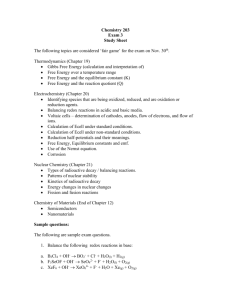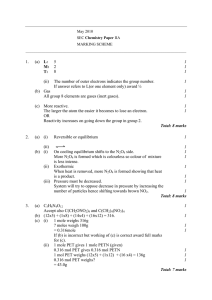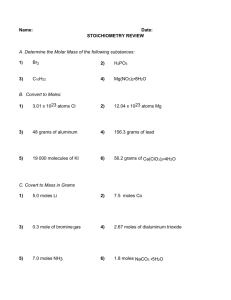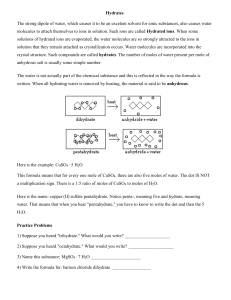template
advertisement
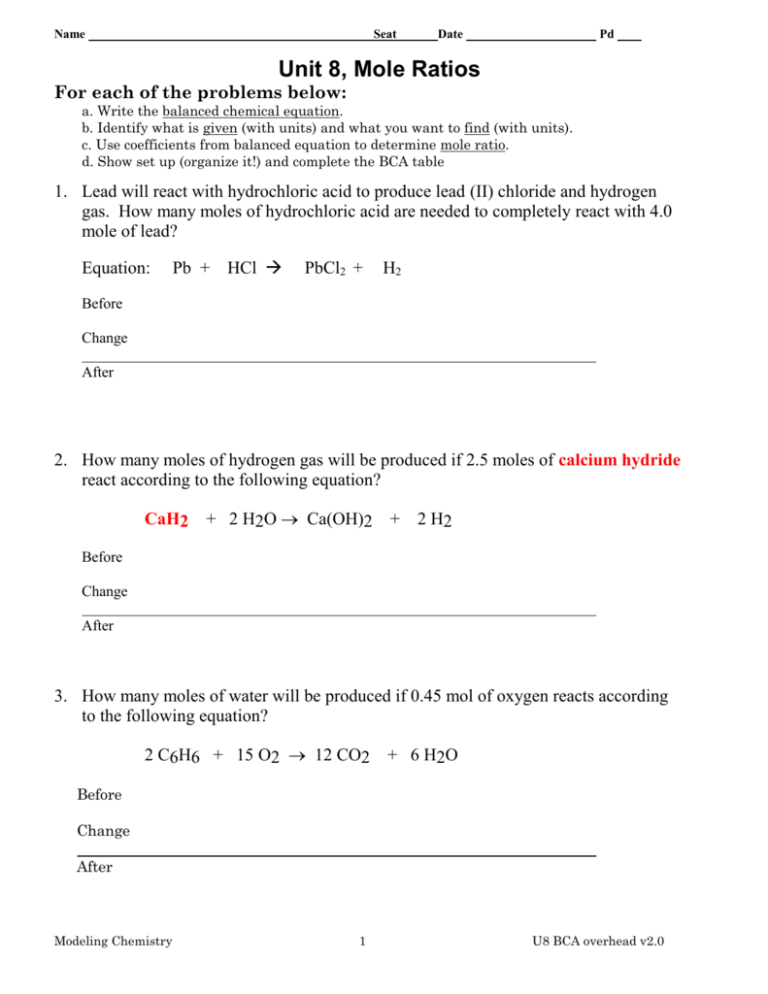
Name Seat Date Pd Unit 8, Mole Ratios For each of the problems below: a. Write the balanced chemical equation. b. Identify what is given (with units) and what you want to find (with units). c. Use coefficients from balanced equation to determine mole ratio. d. Show set up (organize it!) and complete the BCA table 1. Lead will react with hydrochloric acid to produce lead (II) chloride and hydrogen gas. How many moles of hydrochloric acid are needed to completely react with 4.0 mole of lead? Equation: Pb + HCl PbCl2 + H2 Before Change After 2. How many moles of hydrogen gas will be produced if 2.5 moles of calcium hydride react according to the following equation? CaH2 + 2 H2O Ca(OH)2 + 2 H2 Before Change After 3. How many moles of water will be produced if 0.45 mol of oxygen reacts according to the following equation? 2 C6H6 + 15 O2 12 CO2 + 6 H2O Before Change After Modeling Chemistry 1 U8 BCA overhead v2.0 Unit 8 Worksheet 1: Mole relationships 1. Hydrogen sulfide gas, which smells like rotten eggs, burns in air to produce sulfur dioxide and water. How many moles of oxygen gas would be needed to completely burn 8 moles of hydrogen sulfide? Equation: ___ H2S + ___ O2 ___ SO2 + ___ H2O Before ___ ___ ___ ___ Change ___ ___ ___ ___ After 2. Propane, C3H8, burns in air to form carbon dioxide and water. If 12 moles of carbon dioxide are formed, how many moles of propane were burned? Equation: ___C3H8 + ___O2 ___CO2 + ___H2O Before Change After 3. Ammonia, NH3, for fertilizer is made by causing hydrogen and nitrogen to react at high temperature and pressure. How many grams of ammonia can be made from 2.55 grams of nitrogen gas? Equation: ___ N2 + ___ H2 ___ NH3 Before Change After Modeling Chemistry 2 U8 BCA overhead v2.0





